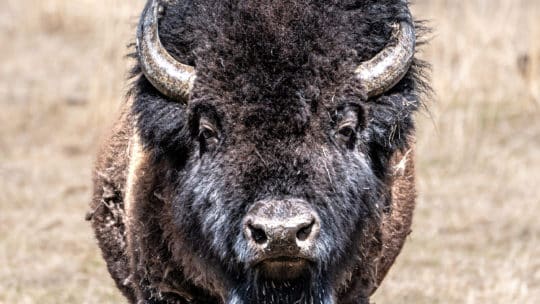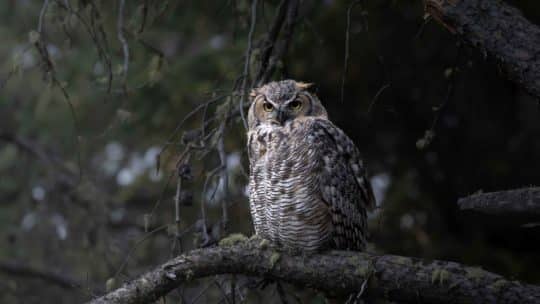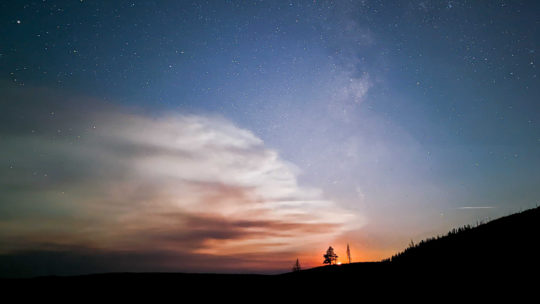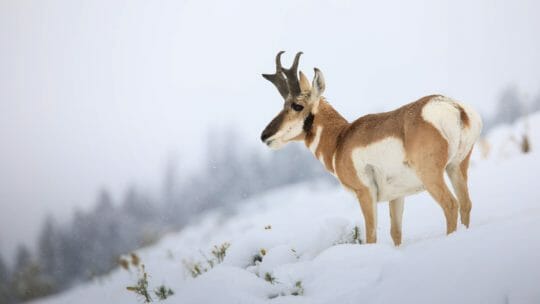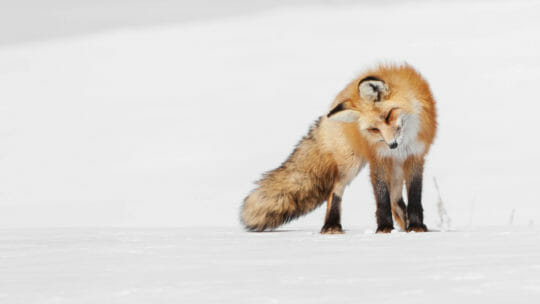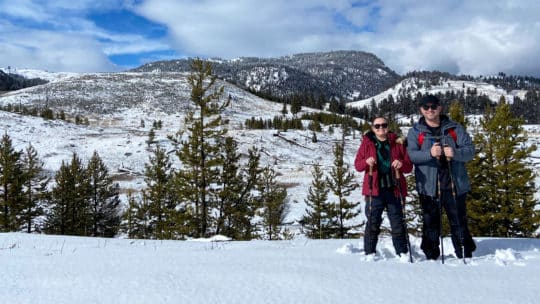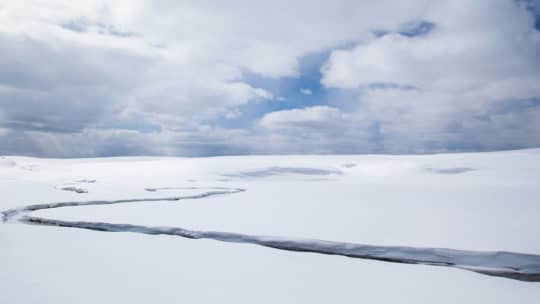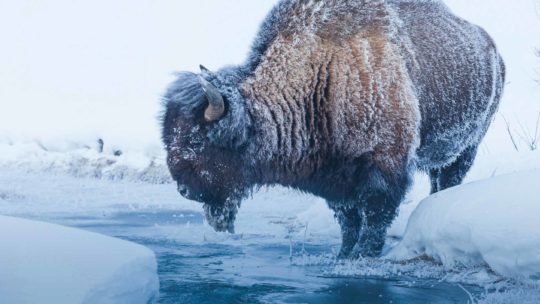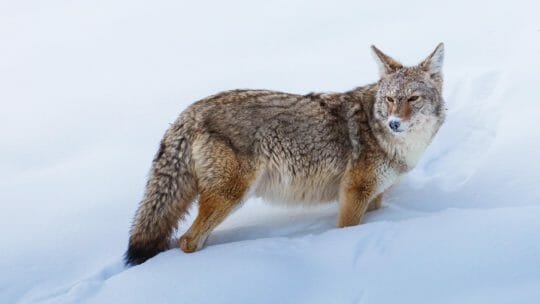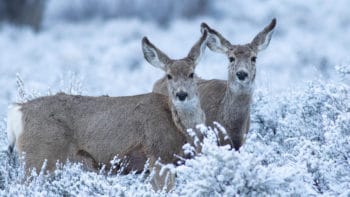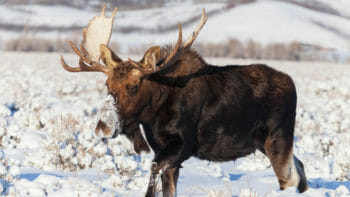Search
Explore
Yellowstone Winter Tours

The winter season runs from November – April, and offers a variety of different experiences in Yellowstone National Park. For the prospect of wolf watching tours, and enjoying a spectacular wintry landscape, we recommend a visit during this time.
During the winter months, Yellowstone National Park is mostly snowbound, with most of the 300 miles of park roads closed to vehicle travel. The majority of the interior is accessible only by over-snow vehicle. In the northeast reaches of the park, one road remains open to vehicles. This is the road that allows us passage through the incredible northern range, and winter is the perfect time to see Yellowstone’s wolves here in the wild.
Your exact route and itinerary will be determined by your interests, current wildlife sightings, and current weather and road conditions. Our guides are all highly experienced, with thousands of hours in the field, and will expertly tailor your safari to you and your group.
The arrival of winter to the Greater Yellowstone Ecosystem is preceded by migration, mating season for some species and hyperphagia for others. Pronghorn and deer both migrate great distances to lower elevations for the winter months. The bison rut and elk rut happens before the snow flies for the winter and bears gorge on berries and other food to fatten up before hibernating for the winter. Wolves and mountain lions thrive in snowy conditions, which often slow down their prey. In Yellowstone, winter becomes the season of the wolf.
Winter temperatures in Yellowstone National Park can be staggeringly low or pleasantly mild. Average lows can dip to 1.2°F (-17.1°C) with extreme lows hitting -66°F (-54°C), the lowest recorded temperature. Average highs range from 24.3°F (-4.3°C) to 43.3°F (6.3°C) as spring arrives.
Since 1991, Yellowstone Safari Company has been the most diverse eco-tour adventure company in the region, offering private, personalized wildlife safaris and tours to Yellowstone National Park. Our professional naturalist guides will provide their guidance and expertise to facilitate nature-based experiences that provide enjoyment and appreciation for the natural world. Conservation education is at the heart of what we do and we look forward to the continued privilege of guiding you through our world.
FAQs
What is your cancellation policy?
We have a 48-hour cancellation policy for all single day wildlife safaris. Cancellations made before the cancellation policy goes into effect will receive a full refund. Cancellations made within 48 hours of departure, and before the day of departure will receive a 50% refund. Cancellations or no-shows on the day of departure will not be refunded. We strongly recommend travel insurance in order to protect you from unforeseen travel interruptions that prevent you from joining us.
What should I pack for a Yellowstone winter tour?
For a Yellowstone winter tour, dress in warm, layered clothing with a waterproof outer layer. Pack insulated boots, gloves, a hat, and a scarf or neck gaiter for comfort in cold conditions. Sunglasses, sunscreen, and a reusable water bottle are also recommended, as the sun can be intense against the snow.
What should I wear?
The rocky mountain range can see drastic temperature swings during the day. Please come prepared! For clothing, synthetic or wool layers are best in our mountain environment. Base layers act as a wicking layer against the body, so we recommend anything from a lightweight layer to an expedition weight layer, depending on the weather. A mid layer provides warmth, so we recommend a midweight fleece layer or softshell jacket for the upper body. The outer layer provides protection from the elements and serves as a wind/water blocking layer. A waterproof shell for your upper body will keep you dry and therefore, warm. For the legs, we recommend either weatherproof rain or snow pants, depending on the temperature. Layering your outer shell pants with lightweight and fleece layers can provide additional warmth. Conditions can change quickly. Your footwear should be comfortable and appropriate for the season. For winter, snow boots with wool socks will keep your feet warm. You’ll also want to bring a wool, or fleece, hat, as well as mittens/gloves to keep your hands warm. In any season, do not forget sunscreen or sunglasses. At high altitude, the sun’s rays are intense, even in winter.
Can you drive through Yellowstone in the winter?
You can drive through parts of Yellowstone in winter, but most park roads close due to snow. The only road open year-round to regular vehicles runs from Gardiner, Montana, through Mammoth Hot Springs to Cooke City, Montana. All other areas, including Old Faithful and Yellowstone Lake, are accessible only by guided snowcoach or snowmobile tours.
Is Yellowstone accessible in the winter?
Yes, Yellowstone is open in winter, though most roads close due to snow. The route from Gardiner (North Entrance) to Cooke City (Northeast Entrance) remains open year-round, while other areas like Old Faithful are only accessible by guided snowcoach or snowmobile. Winter offers incredible wildlife viewing and a quieter, more scenic experience.
What wildlife can we see on a Yellowstone winter tour?
On a Yellowstone winter tour, guests often see bison, elk, mule deer, and moose, along with predators such as wolves, coyotes, and foxes. Bald eagles and other raptors are also common. With the snowy backdrop and fewer visitors, winter is one of the best seasons for spotting wildlife in Yellowstone.
What are the best Yellowstone winter tours for wildlife photography?
The best Yellowstone winter tours for wildlife photography focus on areas like Lamar Valley and the Northern Range, where wolves, bison, elk, and foxes are often seen against snowy backdrops. Guided snowcoach tours, private photo safaris, and multi-day workshops give photographers access to remote geyser basins, frozen waterfalls, and prime wildlife habitats. With expert naturalists and photography instruction, these tours provide incredible opportunities to capture Yellowstone’s dramatic winter landscapes and wildlife in their most photogenic season.
Are Yellowstone winter tours family friendly?
Yes, many Yellowstone winter tours are family friendly. Snowcoach tours, wildlife safaris, and guided snowshoe tours are great options for all ages, offering safe, comfortable travel while still providing opportunities to see bison, elk, wolves, and geysers in a snowy setting. Tour lengths and activity levels vary, so families can choose experiences that match their interests and comfort.

